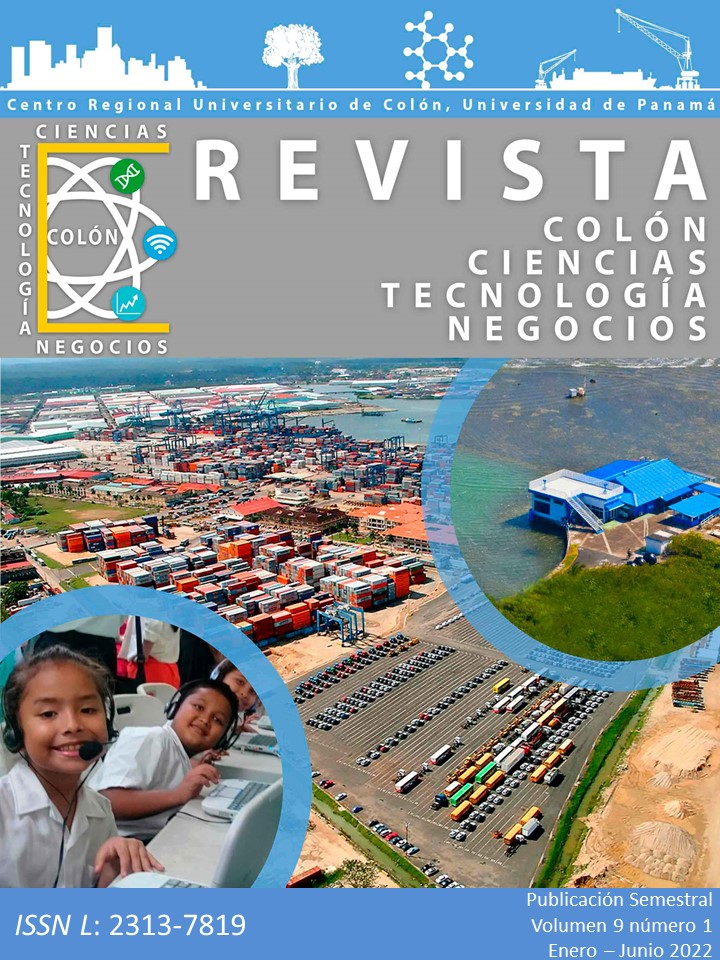
Artículos
Vol. 9 Núm. 1 (2022): Revista Colón Ciencias, Tecnología y Negocios

Este obra está bajo una licencia de Creative Commons Reconocimiento-NoComercial-CompartirIgual 4.0 Internacional.
En este estudio se evaluó el efecto de las sustancias poliméricas extracelulares (EPS), inmovilizadas en un soporte de alginato de sodio, sobre la concentración de plomo (Pb2+), cromo (Cr4+) y cobre (Cu2+) presentes en una matriz acuosa sintética. La concentración de carbohidratos totales más alta en EPS fue de 42.72 ± 0.17 ug/L de la cepa E6. Las perlas inmovilizadas con EPS tuvieron valores de humedad crecientes en dependencia del aumento de la concentración. La mayor remoción de los contaminantes se consiguió con el EPS obtenido de la cepa M2-3, de concentración 15% (remoción= 98.97% Pb2+, 98.05% Cr4+ y 97.25% Cu2+) y una capacidad de adsorción del metal pesado de 0.240 mg/g (PS) para Pb2+, 0.237 mg/g (PS) Cr4+ y 0.471 mg/g (PS) Cu2+. Estos hallazgos demuestran el gran potencial de las perlas con EPS inmovilizados, para su utilización como biosorbente en el tratamiento de aguas contaminadas con metales pesados.
Este obra está bajo una licencia de Creative Commons Reconocimiento-NoComercial-CompartirIgual 4.0 Internacional.
